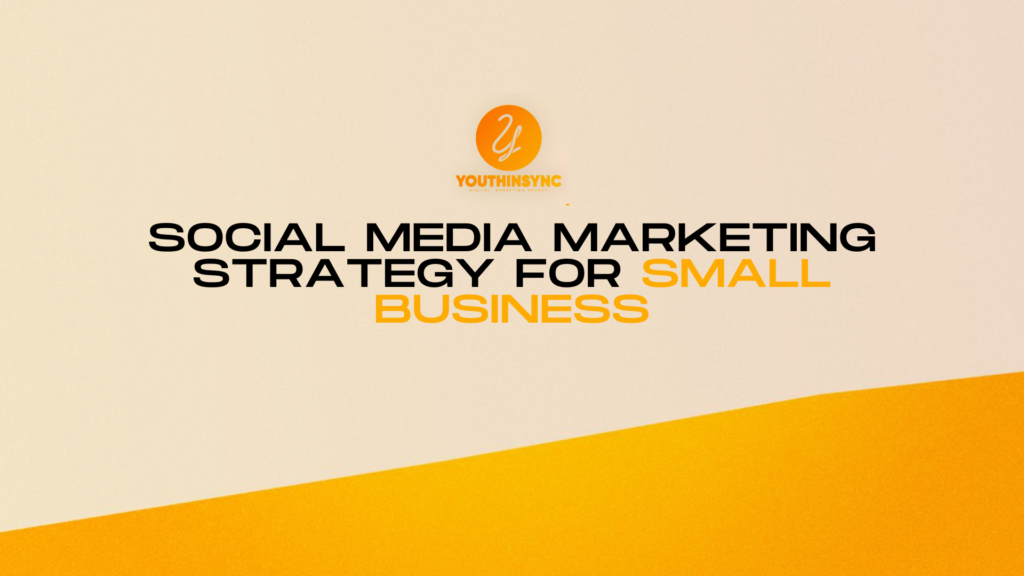Introduction
In today’s digital age, social media has become a vital tool for businesses of all sizes. However, for small businesses, it offers an unparalleled opportunity to compete with larger companies on a more level playing field. With the right strategy, small businesses can leverage social media to build brand awareness, engage with customers, and drive sales. This guide will walk you through the essential steps to create an effective social media marketing strategy tailored to your small business needs.
Understanding Social Media Marketing
What is Social Media Marketing?
Social media marketing involves using platforms like Facebook, Instagram, Twitter, LinkedIn, and others to promote your business. It includes creating and sharing content, engaging with followers, and running ads to achieve your marketing goals. For small businesses, social media marketing is not just about broadcasting your message but building relationships with your audience.
Why Social Media Marketing is Crucial for Small Businesses
Social media offers small businesses the chance to connect directly with their target audience without the hefty budget that traditional marketing often requires. Additionally, social media marketing for small businesses allows you to personalize your brand, create loyal customer communities, and increase website traffic, leading to higher conversion rates.
Setting Goals for Social Media Marketing
Why Setting Goals is Essential
Before diving into social media marketing, it’s crucial to define clear, measurable goals. Without specific objectives, your efforts may lack direction, making it difficult to gauge success. Common goals include increasing brand awareness, generating leads, and boosting customer engagement.
Aligning Social Media Goals with Business Objectives
Your social media goals should align with your broader business objectives. For instance, if your business objective is to increase sales by 20% over the next year, your social media goal could be to drive more traffic to your online store through targeted ads and promotions. Setting SMART goals (Specific, Measurable, Achievable, Relevant, and Time-bound) ensures your social media strategy remains focused and results-driven.
Identifying Your Target Audience
The Importance of Knowing Your Audience
Understanding your target audience is key to crafting a social media strategy that resonates. If you don’t know who your audience is, you can’t effectively engage with them or meet their needs.
Tools and Methods for Audience Identification
Start by analyzing your existing customer base, conducting surveys, and leveraging social media analytics tools to gather demographic information. Platforms like Facebook Insights and Google Analytics can provide valuable data on your audience’s age, gender, location, and interests.
Creating Buyer Personas
To make your strategy even more effective, create detailed buyer personas. These are semi-fictional representations of your ideal customers, based on real data and research. For example, if you’re targeting local business owners, your persona might include details about their challenges, needs, and the social platforms they use most frequently.
Choosing the Right Social Media Platforms
Overview of Popular Platforms
Each social media platform offers unique features and attracts different types of users. For example:
- Facebook is excellent for building community and sharing updates.
- Instagram is ideal for visual storytelling.
- Twitter is great for real-time updates and customer service.
- LinkedIn is best for B2B marketing and professional networking.
How to Choose the Right Platform(s)
Choosing the right platform depends on where your target audience spends their time. If your audience consists mainly of millennials, Instagram and Twitter might be your best bet. However, if you’re targeting other businesses, LinkedIn should be your focus. It’s also wise to start with one or two platforms and expand as you gain more experience.
Platform-Specific Strategies
Once you’ve chosen your platforms, tailor your strategy to each one. For instance, Instagram’s focus on visuals means your content should be image or video-centric. On LinkedIn, longer-form content like articles or industry insights performs better. This targeted approach helps maximize engagement and return on investment.
Creating a Content Strategy
Importance of a Content Calendar
A well-planned content calendar ensures that you consistently post high-quality content. It also helps in maintaining a balance between different types of content, such as promotional posts, educational material, and user-generated content. A content calendar is particularly useful for small businesses as it aids in efficient time management and resource allocation.
Types of Content to Share
Different types of content serve different purposes. Educational content helps build authority, promotional content drives sales, and user-generated content fosters community. Including a mix of blog posts, infographics, videos, and customer testimonials can keep your audience engaged.
Tips for Creating Engaging Content
Engagement is key to success on social media. To create content that resonates, focus on storytelling, use high-quality visuals, and include clear calls to action. Moreover, experimenting with various formats—like live videos, polls, and stories—can increase interaction.
The Role of Visuals and Video Content
Visual content is 40 times more likely to get shared on social media than other types of content. Therefore, incorporating images, infographics, and videos into your strategy is crucial. Videos, in particular, are highly engaging and have been shown to boost conversion rates.
Engaging with Your Audience
The Importance of Interaction
Social media is a two-way street. To build relationships with your audience, you need to engage with them. Respond to comments, answer questions, and show appreciation for their support. This not only boosts customer satisfaction but also increases brand loyalty.
Strategies for Effective Engagement
To effectively engage with your audience, consider hosting live Q&A sessions, conducting polls, or running contests. These activities encourage participation and make your followers feel valued. Moreover, engaging with influencers in your niche can help expand your reach and credibility.
Leveraging User-Generated Content and Influencer Collaborations
User-generated content, such as customer reviews or photos, can be a powerful tool for building trust. Encourage your customers to share their experiences with your products or services on social media. Additionally, partnering with influencers who align with your brand can help you reach new audiences.
Analyzing and Optimizing Your Social Media Strategy
Importance of Tracking Metrics
Tracking key metrics like engagement rate, click-through rate, and conversions is essential for measuring the success of your social media strategy. These metrics provide insights into what’s working and what needs improvement.
Tools for Social Media Analytics
There are numerous tools available to help you track your social media performance. Google Analytics, for example, can track traffic from social media to your website. Platform-specific tools like Facebook Insights and Twitter Analytics offer detailed information about your audience’s behavior and engagement.
Adjusting Your Strategy Based on Analytics
Analyzing your data allows you to identify trends and make informed decisions. If certain types of content are performing well, consider creating more of it. Conversely, if a platform isn’t delivering results, it might be time to adjust your approach or reallocate resources.
Budgeting and Resource Allocation
Allocating Resources Effectively
For small businesses, budgeting for social media marketing can be challenging. However, by allocating resources wisely, you can achieve significant results even on a tight budget. Focus on high-impact activities that align with your goals.
Paid vs. Organic Strategies
While organic reach is valuable, paid advertising can help you reach a broader audience more quickly. A combination of both is often the most effective strategy. For example, you could use organic posts to engage your existing followers and paid ads to attract new ones.
Tips for Maximizing ROI on a Small Budget
To get the most out of your budget, target your ads carefully, create high-quality content that encourages engagement, and continually optimize your strategy based on performance data. Additionally, consider using free tools like Canva for graphic design or Hootsuite for scheduling posts.
Staying Updated with Social Media Trends
Why Keeping Up with Trends is Crucial
Social media is constantly evolving, and staying updated with the latest trends is crucial for maintaining a competitive edge. Trends like video content, ephemeral content (e.g., Instagram Stories), and social commerce are currently on the rise.
Adapting to Changing Algorithms and User Behavior
Social media algorithms frequently change, impacting how your content is distributed. Understanding these changes and adapting your strategy accordingly is essential. For instance, if a platform prioritizes video content, incorporating more videos into your strategy could boost your visibility.
Future Trends to Watch
Some trends that are likely to shape the future of social media include the growing importance of AI-driven analytics, increased focus on privacy and data protection, and the continued rise of influencer marketing. Keeping an eye on these trends will help you stay ahead of the curve.
Conclusion
To sum up, an effective social media marketing strategy is vital for small businesses aiming to build brand awareness, engage with customers, and drive sales. By understanding your audience, setting clear goals, choosing the right platforms, and creating engaging content, you can create a strategy that delivers tangible results. Moreover, staying updated with trends and regularly analyzing your performance will ensure that your strategy remains relevant and effective. Now is the time to take action and start building a social media presence that sets your small business apart from the competition.

